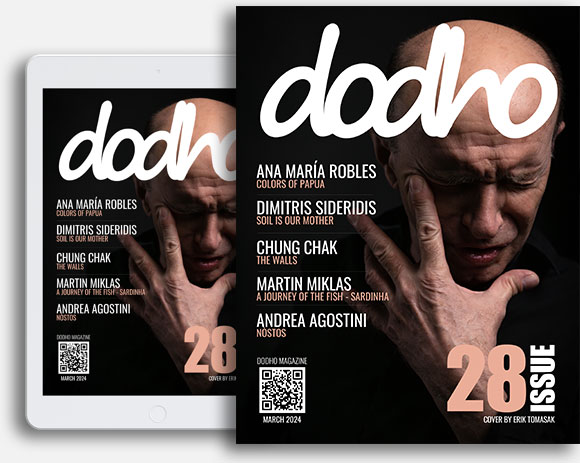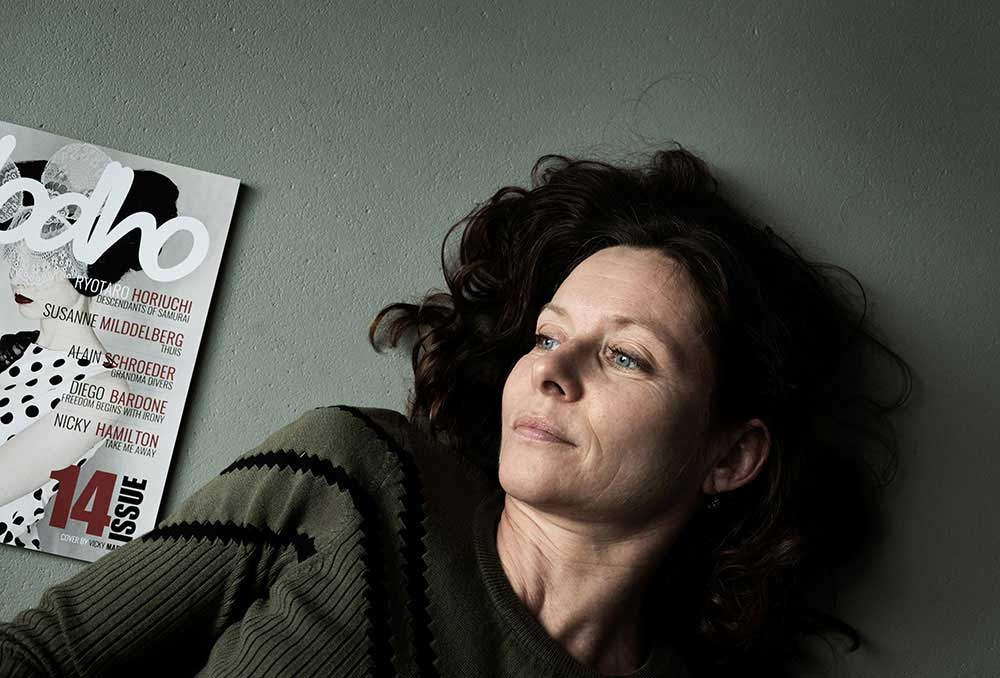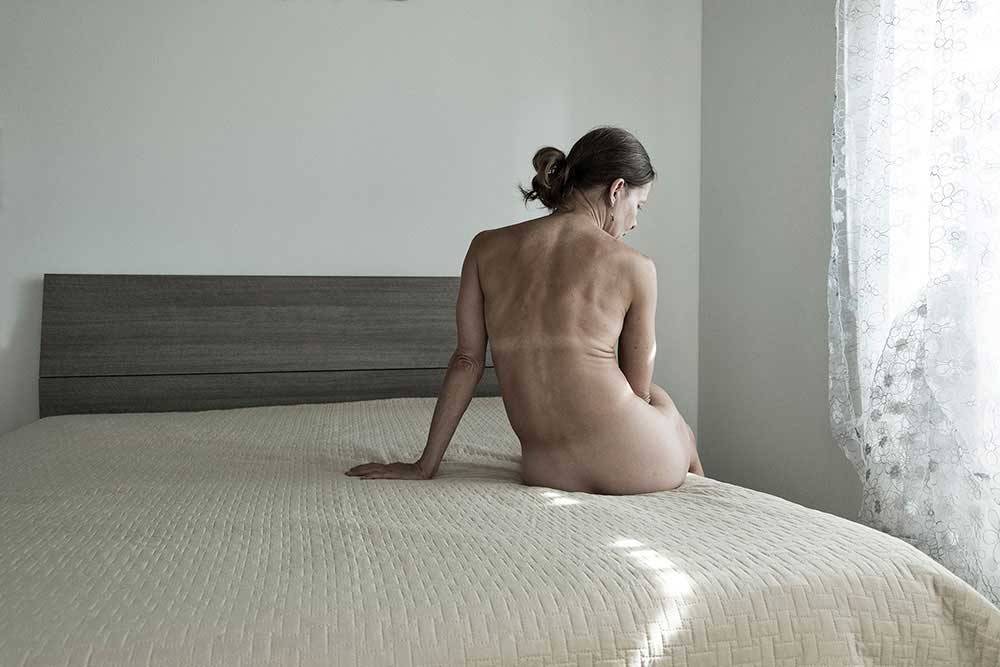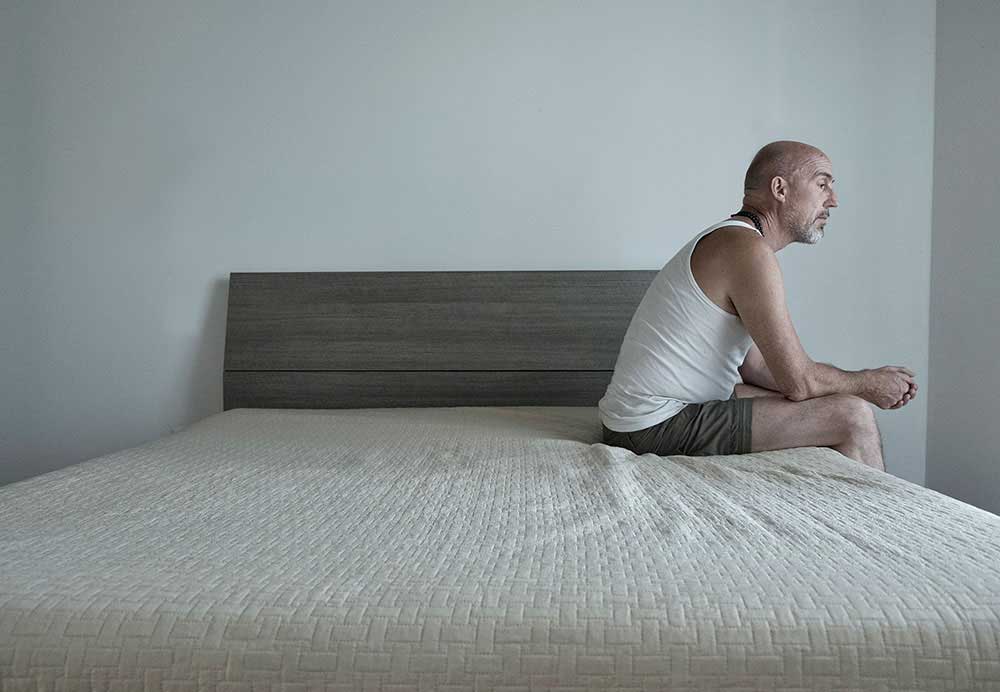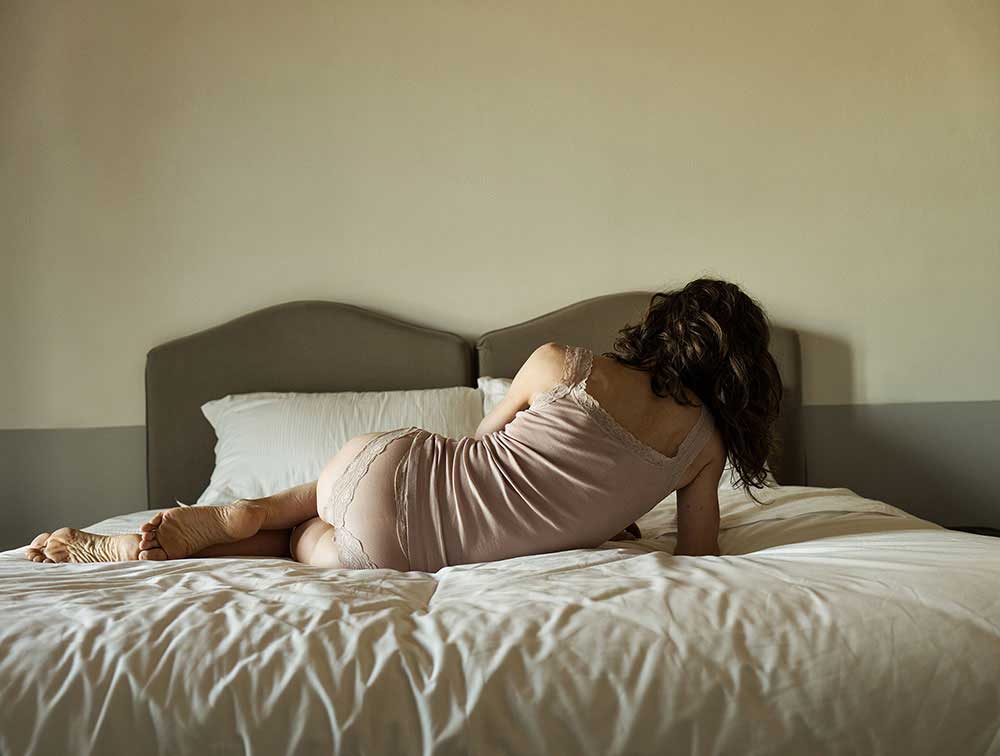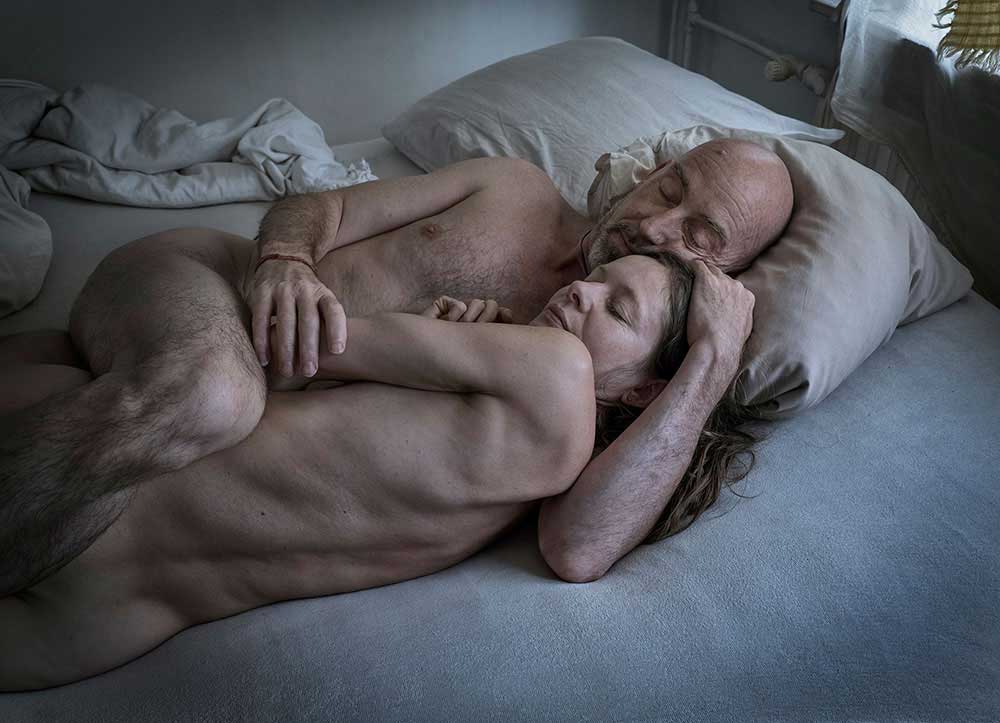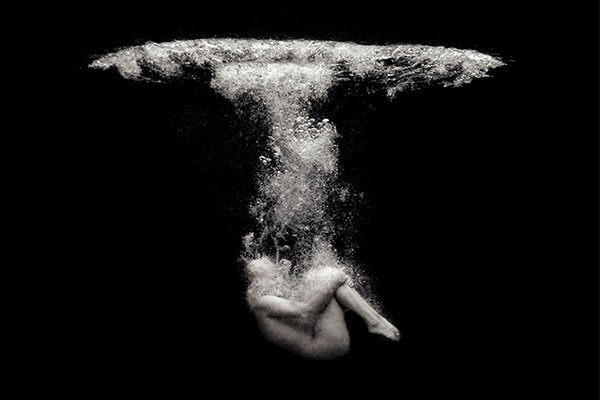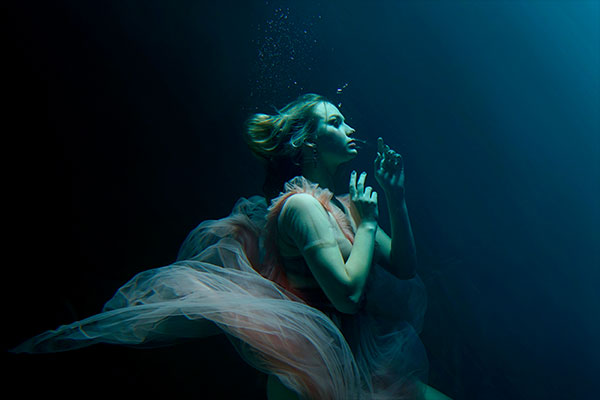After completing a modern dance education at the Higher school for Arts in Arnhem, she graduated in 1998 from the Royal Academy of Arts in The Hague, from the photography department. Susanne specializes in portrait and theater- dance photography.
Susanne had a solo exhibition with her Wonderwomanserie at Soho Photo gallery, New York and she exposed her portraits in Boston at the Fence. Her work was also exhibited a.o. at Deelen Art in Rotterdam, Reflex Modern Art Gallery in Amsterdam, Smelijk en Stokking and gallery Hollandsche Maagd in Gouda and galerie Fontana Fortuna in Amsterdam.
Susanne won several awards a.o. the Canon Master, first place of International Photo Awards, Category Self-Portrait and Gold for the Trierenberg Super Circuit. Susannes work concerns people and their feelings. Being human, concerning life. She does not want to make a statement, or be judgmental, but show how she is touched by people, and what she sees in them. If someone can be true to their nature, and not pretend to be anything other them themselves it is almost always beautiful. Then people show their openness, vulnerability and love.That is what she wishes to voice in her work. [Official Website][Print Edition][Digital edition]
One of the most personal and honest bodies of work I have seen in a while. Mainly interested in the idea of fragility and intimacy, I will be asking about the process behind these images, the feelings of loneliness and fear of trust.
The notion of intimacy is the first thing that comes to mind. I think that you have created a body of work that is so intimate it must have been difficult to even publish. I’d love to know how you creatively came to establish these images, what was your thought process and reason behind strictly sticking to photographing in the bedroom? Did you ever consider expanding this setup to other areas of the house such as the kitchen or living room, or do you believe this would have hindered what the collection of images are about?
These images are about loneliness, being abandoned, pain, about intimacy and connectedness. The photographs were not taken based on a concept, but from a feeling, an impulse. They were taken every time I felt the need to capture that moment. In itself, the scenes could take place at any possible place, also in other parts of the house, or outdoors. However, the images represent situations and events in which I actually found myself. The place formed a part of the situation. For example, a picture of a hotel room was taken during an episode of a television programme during which we were not allowed to leave the terrain where the shoots were taken. The hotel room was the only place where I could be alone and be myself.
I feel that the overall tone of this collection is strangely somber yet familiar. On one hand you have images that beautifully represent the love between you and your partner. These are then coupled with photographs depicting yourself in situations and poses that demonstrate loneliness. Would you say that you took inspiration from your background in theatre and dance in order to execute the correct poses to high- light the feeling of loneliness?
I started taking these pictures at a time that I was very lonely, but did not dare to let anyone come close to me. At the time, photography was the only thing I was capable of. All images have come into existence from that feeling, the images in which I am together with my partner, moments of happiness and safety, too. Nevertheless, the vulnerability is always present. The vulnerability of the other person, myself, but also the vulnerability of the happiness and love. I have definitely not consciously drawn inspiration from my background in the theatre or dance to perform certain poses, but someone once said, “There is no such thing as ex-dancers”, which is true. No dancer stops being a dancer. And I am a dancer. Therefore, everything I do is the work of a dancer and that applies to my photographs as well.
After reading about the project itself, I could not believe the reality you had to face when your partner decided to leave you. Do you believe this project is as much a representation of the loneliness you once felt as well as the resilience of the human condition?
Yes, I do think this project embodies both. It is literally about the loneliness, the fear, and the sorrow that I felt then, along with the regaining of confidence. Likewise, it is also a universal consciousness about loneliness. During this process, I experienced that loneliness is a condition independent of the fact whether you are surrounded by people. Being solitary is not the same as being lonely. Loneliness is the inability to feel connected. Essentially, no living creature is truly alone. Even when we are alone, we are always connected to the world in which we live, and the universe. I can really enjoy being alone. Yet, at times of intense fear, lack of safety, and sadness, it can happen that you no longer have access to that feeling of connectedness. This is something that each human being might experience in intense situations.
You mentioned that you are ‘grateful that you dare to love again’. Is it possible to know a little bit more about the man who helps you to trust in your feelings? It seems as if he is the anchor or bridge that somewhat ties this whole project together.
I have to laugh a bit at myself, because I notice that I find it still more confrontational or more intimate to talk about Eelco, my partner than about myself.
At the time that I was most vulnerable, when I became seriously ill, my then partner, Dennis, left me. That came as an enormous shock to me. I did not see it coming. Two weeks after we had a very emotional talk about my illness, which he found hard to handle, he cheated on me and abruptly ended our relationship. After that, I saw a man whom I had never seen in all those years we spent together: cold, heartless, and cruel. All the trust I had in me was suddenly gone. Not only the trust in him, but also trust in love, life, and especially in myself. I had so much trust in this man and in our relationship. Then I no longer dared to trust my feeling. I thought I had to be worthless, given the way I was abandoned. It felt totally unreal, as if I was no longer a character in my own life. After this break-up, I was alone for a very long time.
I first met my current partner, Eelco, almost 29 years ago. We met during my first dance production, I had just finished my dance education, and we worked together in a production. After that, I danced in other productions and we did not see or speak with each other again for 25 years. Three and a half years ago, I noticed his profile on Facebook. We communicated in writing for six months without seeing each other, before we actually met again.
People never hurt each other to hurt the other person on purpose. They hurt each other so that they do not feel their own pain, to evade their own pain. That people walk away from their own pain and fears, has frightened me a lot. If people act that way, they are easily capable of hurting other people.
Eelco is open and courageous enough not to walk away from his own pain and to stay connected to his feelings. He is very honest about his fears, doubts, and sorrow. Moreover, he dares to show what touches him, which is now essential to feel safe with him. In that context, my partner, my lover, is definitely a bridge to regaining confidence in myself.
I’d love to know a little bit more about your idea behind photographing the gentleman and the young child in this collection. Was it intentional to have them participate in a photograph individually or was this decision something which came naturally and fluid?
Loneliness, a disruption in the capability to feel connected, is universal. Anyone could end up in this condition. That definitely applies to my son, and my partner. Both in a different way. For a long time, my son often felt very lonely and he was unable to open up sufficiently to make real contact and express his feelings in words. That is why I liked having them in this series, because loneliness is not something that is mine alone.
I’d like to conclude this interview by returning to my very first question and asking if you are planning on taking this project even further. Possibly photographing in several locations or a different room altogether? Or is this collection of images more of a therapeutic response, never to be revisited again?
I will elaborate on this series, but these images come into existence from a real situation, and not based on a concept, so I do not know how this body of work will develop.
Francesco Scalici
A recent MA graduate from the University of Lincoln, Francesco has now focused on landscape photography as the basis of his photographic platform. An author for DODHO magazine, Francesco’s interest in documentary photography has turned to writing and has had various articles, interviews and book reviews published on platforms such as: ‘All About Photo.com’, ‘Float Magazine’ and ‘Life Framer Magazine’. Currently on a photographic internship, Francesco has most recently been involved in the making of a short film titled: ‘No One Else’, directed by Pedro Sanchez Román and produced my Martin Nuza.


